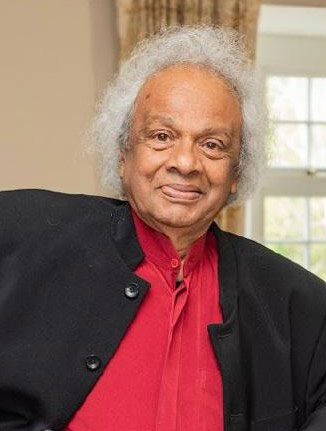News
Gamini Abeysinghe and Kamalangani Perusinghe’s legacy shines on

Sujeeva Nivunhella reporting from London
In a vibrant celebration of Sri Lankan theatrical heritage, the echoes of Sugathapala de Silva’s renowned 1960s stage play Bodingkarayo recently reverberated through the halls of the Winston Churchill Theatre in Ruislip, London.
The curtains rose once again, but this time under the expert guidance of veteran film star Gamini Abeysinghe, who transported this classic onto the international stage.
Abeysinghe, a luminary of 1960s cinema, handpicked a cast from the Sri Lankan community living in the UK, meticulously honing their talents to breathe life into the iconic play. The packed auditorium bore witness to the masterful rendition, warmly acknowledging the immense dedication poured into the production by both the producer and the actors.
The cast included Achala Walpola, Lionel Bandara, Vithana Dhanaratne, Buminda Karunatilleke, Pandula Ranatunge, Ruwini Ranatunge, Amitha Kularatne, Hema Koralalage, Dulari Dilki Dissanayake, Milakshi Gunathilleke, Chameera Dondenu, Dulanjali Alahapperuma and Mihiri Ranawake, each contributing to the Sinhala stage hit of yesteryear replayed for the London audience.
This wasn’t the first time Abeysinghe had orchestrated such a revival. In 2012, he brought R.R. Samarakoon’s Kelani Palama to life in London, assembling a cast from the Lankan talent pool in the UK drawing audiences to numerous shows across the UK and Paris.
In an exclusive interview with this correspondent, Abeysinghe reminisced about his humble beginnings in the industry recalling his journey from Galle to Colombo in response to a newspaper advertisement in 1957. This led him to his debut in the film Daskama..
“Karunaratne Abeysekara was impressed by my performance and gave me the screen name Gamini Abeysinghe,” he reflected. “I was the first Gamini on the Silver Screen even before Gamini Fonseka.”
He fondly recounted his collaborations with Sinhala cinema stalwarts including D.R. Nanayakkara, Rukmani Devi, Tony Ransinghe, Malani Fonseka, Fareena Lai, Don Sirisena, Asoka Ponnamperuma, Lionel Deraniyagala, David Dharmakeerthi, L.M.Perera, Tissa Wijesurendra, Vijaya Kumaratunge, Wimal Kumara de Costa, Roy de Silva, Sumana Amarasinghe, Dommie Jayawardane, Bandu Samarasinghe, Eddie Junior and Mark Samaranayake acknowledging their contributions to his early years in the industry.
“I’ve acted in nine films including Me Desa Kumatada, Hadawathaka Wasanthaya, Sinawai Inawai, Sangeetha, and Sudu Pareviyo before I migrated to England in 1975,” he added.
In the diaspora, Abeysinghe’s dedication to fostering Sri Lankan culture remained strong. He actively engaged with the Sinhala Association of the United Kingdom, steering annual Sinhala New Year events and nurturing local talent through the establishment of the “Hela Parapura” cultural society.
While Abeysinghe carved his path in theatre and cinema, his life intertwined with that of Kamalangani Perusinghe, a renowned dancing teacher in Sri Lanka. Their love story began in Colombo when Abeysinghe, merely 15-years old, met Kamalangani, then 14.
Kamalangani, a protégé of the famed dancer Panibharatha, came into the limelight in the 1960s, leaving an indelible mark with her performances in ballets like Sama Vijaya and Bathe Upatha. Speaking to this correspondent, she shared her journey from teaching at Sri Sumangala Vidyalaya in Panadura to becoming a lecturer at the Teachers’ College of Aesthetic Education, Giragama, before relocating to England.
She established the Kamalagani Art Center in the UK meeting the need of the Lankan commuity in the UK by teaching dance to numerous children and adults.Together, Abeysinghe and Kamalangani have created a legacy that continues to thrive through their tireless dedication to keeping Sri Lankan performing arts alive in distant lands.
